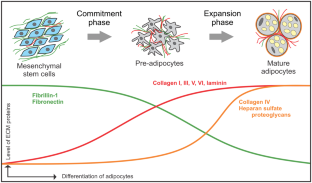

Proteomics profiling identified fibrillin-1 (FBN1) as a key component of the fibrotic KTS, which was up-regulated in animal models and patients with CKD. When cultured on a decellularized kidney tissue scaffold (KTS) from fibrotic kidney, endothelial cells increased the expression of proapoptotic proteins. Here, we show a central role of the extracellular microenvironment in controlling endothelial cell survival and proliferation in CKD. However, the mechanism underlying endothelial cell dropout is poorly defined. It will be interesting to see how disease variants in these proteins affect their O-glucosylation.Įndothelial cell injury leading to microvascular rarefaction is a characteristic feature of chronic kidney disease (CKD).

These results illustrate that POGLUT2 and 3 function together to O-glucosylate protein substrates, and that these modifications play a role in the secretion of substrate proteins. In vitro secretion assays using the N-terminal portion of recombinant FBN1 revealed reduced FBN1 secretion in POGLUT2 knockout, POGLUT3 knockout, and POGLUT2 and 3 double knockout HEK293T cells compared to wild type. Like POGLUT1, POGLUT2 and 3 can discern a folded versus unfolded EGF repeat, suggesting POGLUT2 and 3 are involved in a protein folding pathway. POGLUT2 and POGLUT3 are homologs of POGLUT1, which stabilizes Notch proteins by addition of O-glucose to Notch EGF repeats. While most sites are modified by both enzymes, some sites show a preference for either POGLUT2 or POGLUT3. Here, using mass spectral analysis, we show that POGLUT2 and POGLUT3 also modify over half of the EGF repeats on FBN1, fibrillin-2 (FBN2), and LTBP1. We recently identified two novel protein O-glucosyltransferases, Protein O-glucosyltransferase 2 (POGLUT2) and 3 (POGLUT3), that modify a small fraction of EGF repeats on Notch. Mutations within the 47 epidermal growth factor-like (EGF) repeats of FBN1 cause autosomal dominant disorders including Marfan Syndrome which is characterized by disrupted TGF-β signaling. Through protein-protein interactions with latent transforming growth factor (TGF) β binding protein 1 (LTBP1), microfibrils regulate TGF-β signaling. Fibrillin-1 (FBN1) is the major component of extracellular matrix microfibrils which are required for proper development of elastic tissues, including the heart and lungs.


 0 kommentar(er)
0 kommentar(er)
